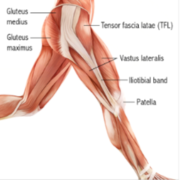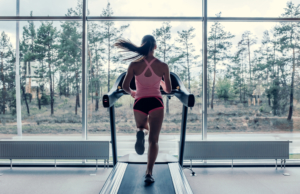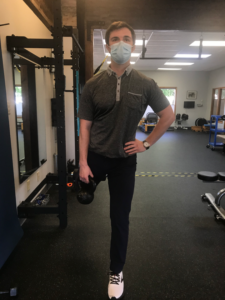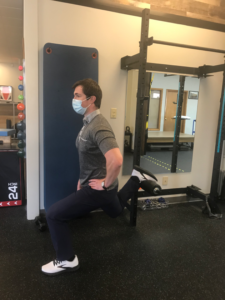By: Benjamin Blakely, PT, DPT, CSCS
Whether you enjoy biking, camping, hiking, or trail running, summer is the best time of year to live in Big Sky country and enjoy the outdoors. Here at Sapphire Physical Therapy, we work with a lot of patients who have running-related pains. One of the most common running-related pains is the IT band.
What is it?
The iliotibial band is named after the structures that it attaches to, including the ilium (hip bone) and the tibia (shin bone). It is a taut thickening of fascia that runs along the outside of our thigh and inserts into our knee.
For years, it was thought that the IT band would flip over a bony prominence on the femur and the repetitive friction would cause pain. However, this rubbing is an illusion created by the differently oriented fibers changing tension when we bend or straighten our knee.1
So why does mine hurt?
Research has found that it is more likely aggravated by compression than friction.2
Factors that contribute to greater compression or irritation include increasing training volumes too quickly, running mechanics, relative muscle weaknesses, and running on variable surfaces.
Is there anything I can do for it?
Oftentimes, it is recommended that rolling out the IT band is the best thing you can do. However, we cannot produce enough force to actually impact the structure3 and as a compression injury, this will likely do the opposite and slow the healing process. If you love rolling out, focus your pressure on some of the muscles that attach to it, including your quadriceps, hip flexors and glutes.
Our best recommendation would be to focus on managing your total volume, temporarily limit elevation training, and to do targeted strength training.4, 5
Here is one of our favorites exercises, the split squat:
With our comprehensive multidimensional video running gait analysis, we can also analyze your running patterns and provide recommendations specific to you that may help to reduce IT band compression and subsequent irritation.
Final Thoughts
IT band pain can be a frustrating injury and can keep us from our favorite activities. If you have nagging symptoms or would like a running gait analysis, book an appointment with one of our skilled and knowledgeable physical therapists at Sapphire Physical Therapy and we will do our best to help you get back to enjoying your Montana Summer.
Happy running!
References
- Fairclough J, Hayashi K, Toumi H, et al. Is iliotibial band syndrome really a friction syndrome?. J Sci Med Sport. 2007;10(2):74-78. doi:10.1016/j.jsams.2006.05.017
- Fairclough J, Hayashi K, Toumi H, et al. The functional anatomy of the iliotibial band during flexion and extension of the knee: implications for understanding iliotibial band syndrome. J Anat. 2006;208(3):309-316. doi:10.1111/j.1469-7580.2006.00531.x
- Chaudhry H, Schleip R, Ji Z, Bukiet B, Maney M, Findley T. Three-dimensional mathematical model for deformation of human fasciae in manual therapy. J Am Osteopath Assoc. 2008;108(8):379-390. doi:10.7556/jaoa.2008.108.8.379
- Fredericson M, Cookingham CL, Chaudhari AM, Dowdell BC, Oestreicher N, Sahrmann SA. Hip abductor weakness in distance runners with iliotibial band syndrome. Clin J Sport Med. 2000;10(3):169-175. doi:10.1097/00042752-200007000-00004
- Friede MC, Klauser A, Fink C, Csapo R. Stiffness of the iliotibial band and associated muscles in runner’s knee: Assessing the effects of physiotherapy through ultrasound shear wave elastography. Phys Ther Sport. 2020;45:126-134. doi:10.1016/j.ptsp.2020.06.015











